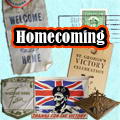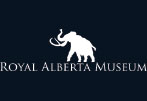Tears in the Garden: Alberta Ukrainians During the Second World War
Peter Melnycky
Reprinted with permission of the author and publisher of For King and Country: Alberta in the Second World War Canada's entry into the Second World War was to have profound effects on all its citizens, including the country's numerous ethnic minorities. The Ukrainians, one of Canada's largest ethno-cultural communities, figured prominently in the national mobilization for the war effort. The 1941 census recorded 305,929 Ukrainians in Canada, and during the course of the war their loyalty was subjected to the same sort of scrutiny that had been directed towards them during the Great War of 1914-191 8. In spite of this, Ukrainian-Canadians, both individually and as a community, were to make a significant contribution to the war effort. The intent of this paper is to examine the Ukrainian-Canadian community in Alberta during the Second World War, and to summarize its record of war service.
Canada's entry into the Second World War was to have profound effects on all its citizens, including the country's numerous ethnic minorities. The Ukrainians, one of Canada's largest ethno-cultural communities, figured prominently in the national mobilization for the war effort. The 1941 census recorded 305,929 Ukrainians in Canada, and during the course of the war their loyalty was subjected to the same sort of scrutiny that had been directed towards them during the Great War of 1914-191 8. In spite of this, Ukrainian-Canadians, both individually and as a community, were to make a significant contribution to the war effort. The intent of this paper is to examine the Ukrainian-Canadian community in Alberta during the Second World War, and to summarize its record of war service.
By 1941 the Ukrainian community in Alberta had been established for almost five decades since the first settlement of the 1890s. The third-largest demographic group, after the British [English, Scottish, Irish] and Germans, Ukrainians numbered 71,868 in 1941, with an overwhelming 58,470 [81.36 %] living in rural areas, and only 13,398 [18.64 %] living in urban centres. Almost 60 per cent of urban Ukrainians lived in Edmonton [6668 or 49.76 %] and Calgary [1164 or 8.68 %]. This rural predominance was reflected in a work force that was primarily agricultural. Two-thirds of Alberta's Ukrainians were Canadian born.1
The war effort was supported by most political factions within the community, especially after the Soviet Union's entry into the conflict against Germany in 1941. Edmonton's Ukrainian Catholic Ukrainski visti [Ukrainian News], the major Ukrainian periodical published in Alberta, declared:
We, Canadian Ukrainians, as loyal subjects of Canada, await the command of our government and stand on guard Jar our fosterland Canada, and the whole British Empire, by the side of other Canadian patriots. All our service - Jar the King, Jar Canada, and for the bright future of the invincible British Empire!2
Early on in the war, Ukrainian-Canadians enlisted voluntarily in such large numbers that, in 1941, Joseph Thorson, Minister of National War Services, noted that Ukrainians, especially in certain districts in Saskatchewan, were enlisting out of all proportion to their population. The English-language press estimated there were 35,000 Ukrainians in the armed forces, a figure which was accepted as the minimum number who served during the war. The press also noted that Ukrainians made up 10 % of the Canadian contingent sent to defend the garrison at Hong Kong.3
In recognition of these high levels of enlistment, the military established a separate chaplaincy, with seven priests of the Ukrainian Catholic and Orthodox churches to minister to the needs of their faithful. In February 1942, Rev. S.B. Sawchuk of Winnipeg was the first Ukrainian Orthodox priest to be appointed chaplain for Ukrainian Orthodox personnel of all services in the prairie provinces4, while Rev. Michael Pelech was the first to act in this capacity for the Ukrainian Catholic servicemen.5 Rev. Michael Fyk was the second Orthodox priest appointed to the chaplaincy.6 Ukrainian servicemen also received leave for Christmas holidays according to the traditional Eastern rite Julian calendar rather than the Gregorian calendar recognized by the Latin rite Catholic and Protestant churches, as well as the Canadian government.7
Alberta's Ukrainians were among the first Canadian soldiers sent overseas to Europe; Michael Hunka shipped out from Halifax in December 1939.8 In Edmonton, the local branch of the Ukrainian National Federation made particular efforts to ensure a Ukrainian presence in the Canadian military. Members enlisted to form a separate platoon within the Second Battalion of the Edmonton Regiment, Canadian Reserve Army. In January 1942 the Ukrainian National Home in Edmonton hosted a traditional Ukrainian Christmas Eve dinner for the Ukrainian platoon, and for twenty Ukrainian-Canadians training there with the Royal Canadian Air Force. Former Member of Parliament Michael Luchkowich and Vegreville MP Anthony Hlynka addressed the guests, and together toasted the Ukrainian-Canadians who had fallen in the defence of Hong Kong.9 The Ukrainski visti echoed these sentiments, running block messages on its editorial page calling for Canadians to "Yidomstit Hong Kong" [Avenge Hong Kong].10
A month later the Ukrainian platoon hosted a second banquet intended to encourage continued enlistment in the Canadian military. Attending were Edmonton Police Chief A.G. Shute, Lieutenant Parlee, Officer Commanding, the Ukrainian platoon, Lieutenant-Colonel R.W. Hale, Officer Commanding, 2nd Battalion, Edmonton Regiment, with Major Fry of the Edmonton Regiment. During the banquet, Radway teacher Volodymyr H. Kupchenko, the son of a prominent Ukrainian National Federation activist, announced his intention to enlist, suggesting that "[any] able-bodied young man should be ashamed of wearing civilian clothing at this stage of the war.. .. The freedom we are enjoying in Canada is too precious to be lost through complacency on our part."11
Notes
1. N.J. Hunchak, Canadians of Ukrainian Origin: Population, Series No. 1, [Winnipeg: Ukrainian Canadian Committee, 1945], pp. 47, 49, 54, 57, 67-68; William Darcovich and Paul Yuzyk [eds.], A Statistical Compendium on the Ukrainians in Canada, 1891-1976, [Ottawa: University of Ottawa Press, 1980], p. 66.
2. Ukrainski visti, 5 September 1939, cited in Watson Kirkconnell, The Ukrainian Canadians and the War, [Toronto: Oxford University Press, 1940], p. 15.
3. Ukrainksi visti, 16 December 1941, cites The Toronto Evening Telegram and the Toronto Star. See also Paul Yuzyk, The Ukrainians in Manitoba: A Social History, [Toronto: University of Toronto Press, 1953], pp. 192-193.
4. Ukrainksyi holos, 18 February 1942.
5. Ibid., 18 March 1942.
6. Ibid., 9 June 1943.
7. Ibid., 9 December 1942.
8. Ukrainian Canadian Museum and Archives, Edmonton Photograph File: 72-319.
9. Ukrainski visti, 25 November 1941; 13 January 1942.
10. Ibid., 10 March 1942.
11. Edmonton Bulletin, 9 February 1942, cited by Myrna Kostash, All of Baba's Children, [Edmonton: Hurtig Publishers, 1977], p. 303; Novyi shliakh, 18 February 1942.








